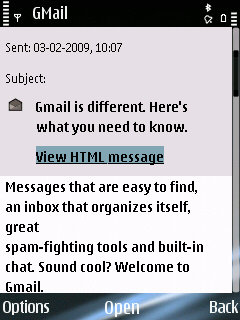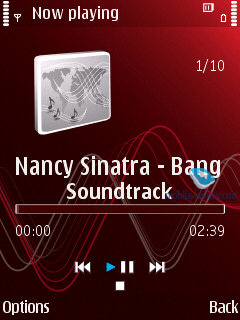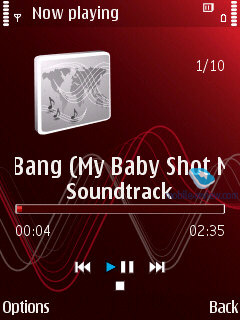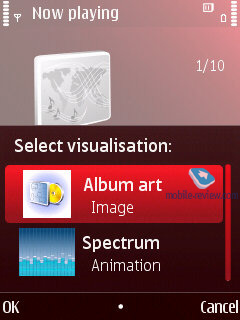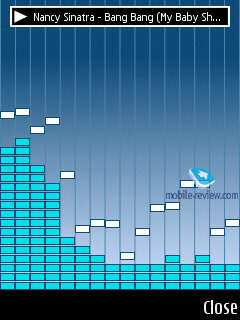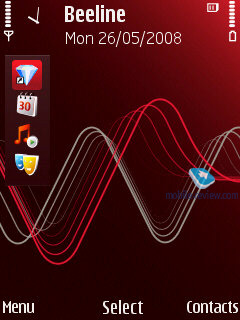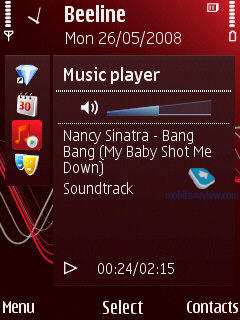Preview of UMTS-smartphone Nokia E75
Live images of the Nokia E75
Table of contents:
- Positioning
- Design, Size, Controls
- Display
- Keypad
- Battery
- Memory
- USB, Bluetooth, WiFi
- Camera
- Software
- Impressions
Sales package:
- Nokia E75
- 1000 mAh Li-Ion (BL-4U)
- Charger (AC-8)
- USB-data cable (CA-101)
- Wired stereo-headset (HS-43)
- User Guide
- 4 Gb microSD memory card
Positioning
When launched, in a very low key manner, the Nokia E75 was heralded as the successor to Nokia's line-up of communicators, and the E90 in particular. Their desire to put the fame of the latter to good use is understandable in light of the fact that further development of the said line-up is in question, as the model they had on the 2010 roadmap was canceled a while ago. So, does this mean that the E75 is the next of kin, since there is nothing else on the horizon? Yes and no, because its form-factor and the way it's positioned are totally different. So the question is: what audience the E75 targets?

Being a part of the Eseries range the E75 is designed for enterprise users, or at least that's what this line-up's purpose used to be. But what has happened to it over the last couple of years? Its members are getting more and more like other mass-market products both in terms of looks and functionality (including more streamlined casings, flashy color schemes and so on). The only unique feature characterizing Eseseries at this point is its software that enables the user to search for contacts, launch applications via shortcuts and other small traits. But the fact of the matter is that Nokia have finally admitted that there is no such thing as an "enterprise phone", but there are people who want to get conventionally designed devices with a bunch of extra features thrown in for good measure. In this sense, the Nokia E75 takes us even further away from the original idea behind the Eseries and boasts support for NGage out of the box, which is something we wouldn't dare dream of several years ago.
As far as I'm concerned, all this reminds me of an old story with Motorola that didn't see any point in adding games in their phones, along with a number of other features, arguing that their primary audience was comprised of enterprise users. But at the end of the day this policy led to Motorola losing some of its audience to more quick-witted vendors. Nokia fell into a similar trap, although with different accents - having pumped out a multitude of phones, the company attempted to classify them and in their books a business-savvy line-up was in order. However these days, say, the Nokia E71 has so much more to it - it caters for the needs of various consumer groups, including ordinary users who require a QWERTY-keyboard among all other things. Although it's worth mentioning that the E71 has managed to attract a good number of enterprise customers nonetheless.

So, who the Nokia E75 is designed for? Essentially, it aims at people who are into mobile mail services or IM clients and therefore could use a full-sized thumbboard. All things considered, there are two consumer groups that crave this functionality in their phones - the younger generation and businessmen (with the ratio revolving at around 60 to 40 level). All in all, it's almost no different from the Nokia E71 from this standpoint, although the E75 won't see as many women among its users.

Now that we have figured out the crux of the E75's positioning, I suppose you're wondering whether it will rival the E71 since the target the same audience. The truth, however, is that while they address the same need with their spacious full-sized QWERTY-keyboards, they are designed in different ways at that. So while their target audiences overlap to a certain extent, in reality the E75 and E71 complement each other. As it stands today, in 2009-2010 Nokia are going to have all kinds of thumbboard-enabled phones in their portfolio (QWERTY in candybar-shaped phones, semi-QWERTY in candybars or sliders, side-sliders with thumbboards). While the owners of the Nokia E71 won't see the new E75 as a worthy replacement for their phones, as, in truth, there is almost no difference between them, the E75 will be a nice extra option for everyone who is about to buy a QWERTY-enabled phone. In fact, Nokia have formed two major braches of these phones: candybars (E63, E71, E73) and side-sliders (E75, Nokia 5730 XM, E85). At the same time their semi-QWERTY solutions won't appeal to the mass-market.
Nokia E75 vs Nokia E71:
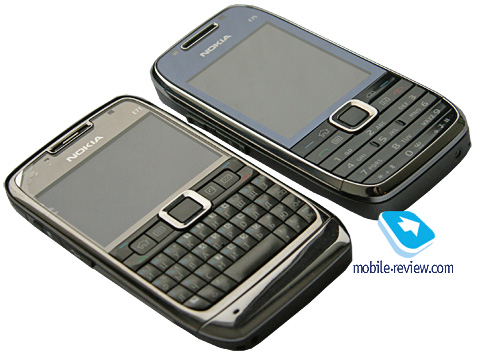
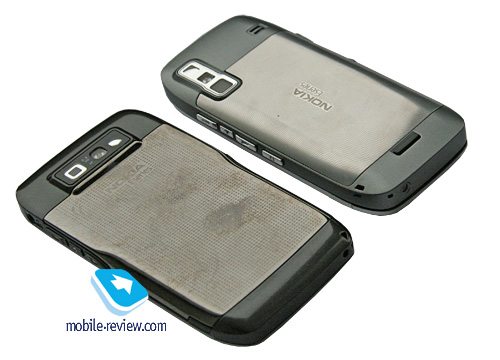
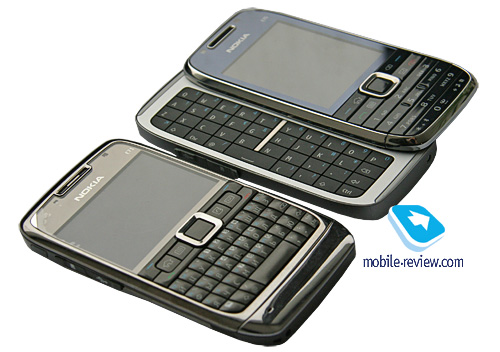
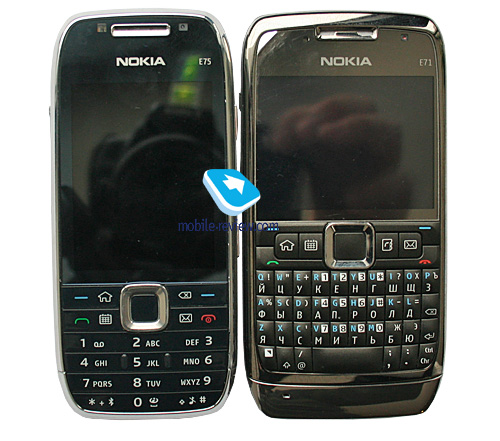
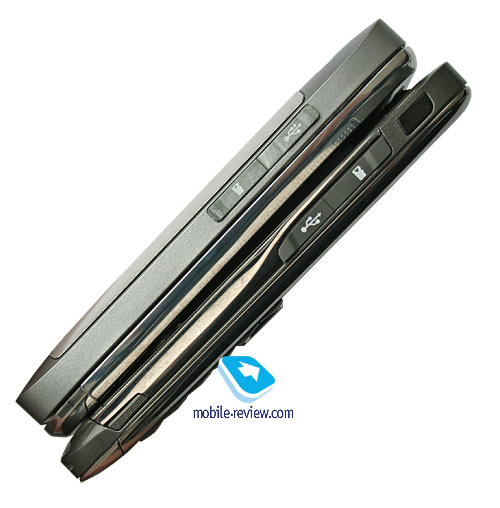
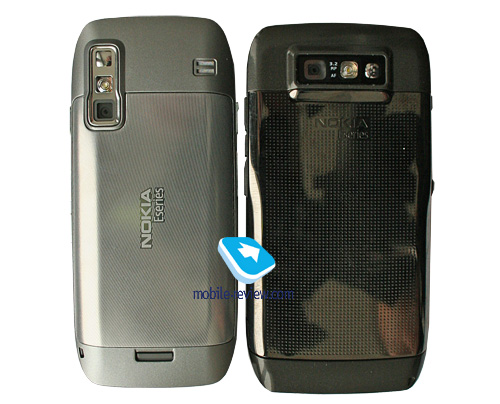
As far as rivals go, Nokia's side-slider phones have none - while this form-factor is quite popular among phone makers specializing on Windows Mobile, their solutions are almost twice as expensive, which puts the E75 and the likes way ahead of all other offerings out there.
Back to the table of contents >>>
Design, Size, Controls
The phone comes in a choice of three colors: Red, Silver Black and Copper Yellow.



The Nokia E75 measures at 111.8x50x14.4 mm and tips our scales at just 139 grams, which isn't overly heavy for a phone whose back is made of stainless steel. With the thumbboard slid out its width grows to 80 mm. Also, since it the phone packs in a full-sized QWERTY keyboard it's hard to blame it for being this thick; furthermore, I'm positive many of you remember that some ordinary phones from just two years ago weren't much thinner than this side-slider.



Nokia E75 vs Nokia E51:
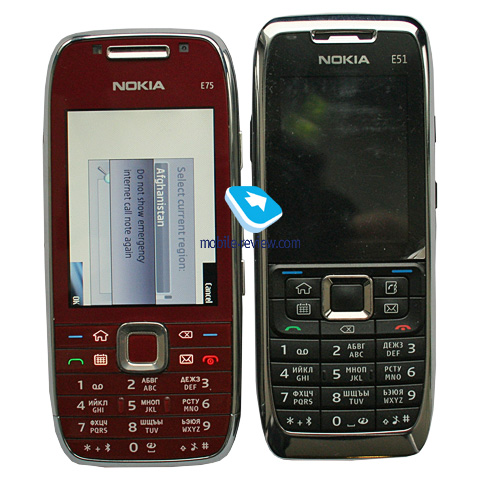
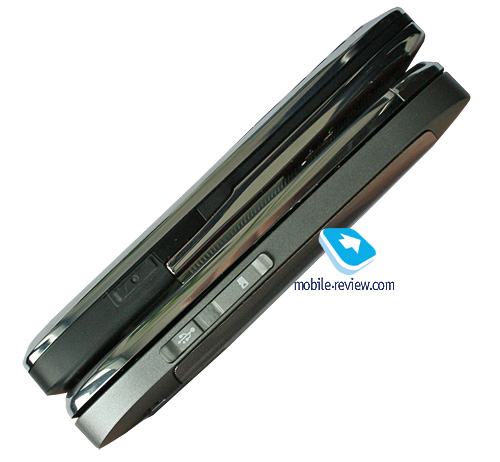
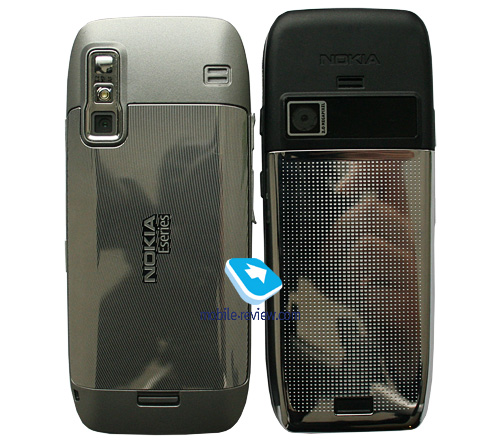
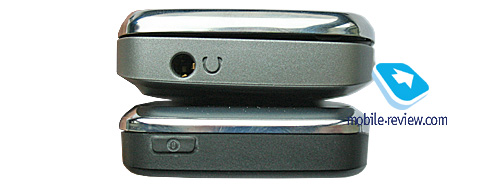
The E75 is a reasonable palm-friendly phone and its spring-loaded mechanism makes the upper half slide back and forth effortlessly. On top of that, we're quite happy with the phone's overall build quality - none of its parts feel loose or creak when squeezed. In fact, build quality is what differentiates the Eseries handsets from all other Nokia-branded smartphones - I can hardly remember an instance when I complained about their enterprise device being poorly assembled.


Perched on the left is the memory card slot along with the microUSB socket (both covered with rubber flaps).


On the right are the volume controls with the Voice button sitting right between them (actives voice recorder or voice dialing). Further down is the dedicated camera button. Hosed at the bottom is the charger port (2 mm), while on the top end there is a standard 3.5 mm audio jack (since the E75 is the first Eseries-branded handset to utilize AIC33 audio chip).



Back to the table of contents >>>
Display
The handset comes equipped with a 2.4-inch QVGA (240x320 pixels) display, capable of showing up to 16M colors, presenting you with quite a bright picture that remains visible in various environments. All in all, the E75 packs in a likable screen that can accommodate up to 8 text and up to 3 service lines. In some modes, though, you may get up to 14 text lines. All fonts are sharp and easy to read.
Back to the table of contents >>>
Keypad
The navigation cluster found on the E75 is fairly large with mid-sized soft-to-press buttons. As for the numeric keypad, it's a cinch to use. All keys are lit in moderately bright white. The navigation pad boasts a built-in sensor.


The bundled QWERTY keyboard is also pretty easy to use and allows for typing with both hands. As far as bits and pieces go, it lets you change input language in the same manner as the Nokia E71. One thing of note about it, though, is that the E75's thumbboard offers a completely new experience that's not like the E71 or Nokia's communicators, but like we said it's quite user-friendly.
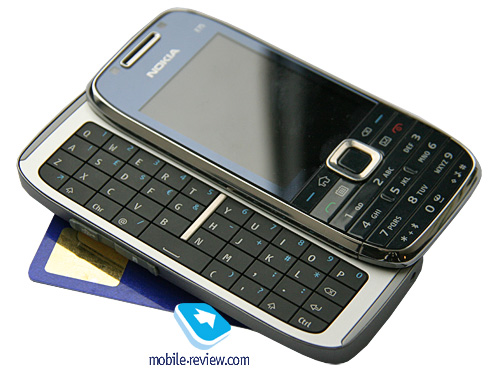




Back to the table of contents >>>
Battery
The handset utilizes a 1000 mAh Li-Ion battery (BL-4U), rated for 280 hours of standby, 5.2 hours of talk time, 25 hours of music, 150 minutes of video recording (top quality settings) and 180 minutes of video playback.

In Europe the E75 lasted around 3 days with moderate use (1,5 hours of calls and up to an hour of music, a dozen of images and several minutes of video). It takes the battery just shy of 2 hours to charge from empty to full.
Below is our chart of battery times we managed to squeeze out of the Nokia 6700:
- Video playback - 4 hours
- WEB-surfing (EDGE) - 3 hours
- Music (in earphones) - 25.5 hours
- Radio - 23 hours
- Games - 4.5 hours
- GPS - 4 hours
Back to the table of contents >>>
Memory
The device comes equipped with 128 Mb of RAM, after first launch you will get around 96 Mb of free memory at your disposal, which is enough for running a dozen applications and browsing "heavy-duty" web-pages - the word "slow-down" is definitely not in the E75's vocabulary. Also it offers the user almost 50 Mb of storage, where any data can be stored.
The E75 deals with microSD memory cards (hot-swappable), the phone comes packaged with an 8 Gb unit. There are no restrictions as far as memory card's size is concerned - our handset easily identified a 32Gb card.
Back to the table of contents >>>
USB, Bluetooth, WiFi
USB. You pick one of these 3 connection modes in the USB settings of the E75:
- Data Transfer (Mass Storage USB) – memory cards is available, no drivers required, as your OS identifies the handset automatically.
- PC Suite – used for device management via Nokia PC Suite, enables all features of the phone, data backup etc.
- Image Print – no explanation required.
Data transfer speeds top out at around 1 Mb/s.
Bluetooth. The phone comes with Bluetooth v2.0, with support for EDR. The following profiles are supported:
- A2DP
- AVCRP
- BIP-ImagePush
- DUN-GW
- FT-Server
- HandsFree-AG (1.0)
- Headset-AG
- OBEX
- OPP-Client
- OPP-Server
- SIM Access-Server
The top speed you can get with the E75's Bluetooth connection is around 100 Kb/s. We also tested its A2DP profile in pair with the Sony Ericsson DS970 headset, which worked just fine - we managed our play list, skipped within tracks and adjusted volume seamlessly, however we couldn't make current track's title show up on the headset's display.
WiFi. The phone supports 802.11 b/g standard, and comes included with a network setup wizard.
Back to the table of contents >>>
Camera
The E75's camera quality is totally identical to that of the Nokia N78 - you can learn more about it here.

Back to the table of contents >>>
Software
The ESeries devices have always been worlds apart from other S60-powered devices in the way of software. Some apps and options that were tested on these phones in the first place are now becoming par for the course in the rest of the company's portfolio, but some still remain the trademark features of the ESeries. On this front the E75 is almost identical to the Nokia E71, although it has got some updates, such as a revamp in the mail client that now supports html, as well as new filters. Plus, it's easier to setup now and, essentially, it employs email.nokia.com service that's now available on Nokia's phones as a pre-installed application.
The Nokia E75 sports a unique phonebook, calendar and some other features that are very different from those generic applications built into S60 3rd edition FP2. Let's see what new feats and abilities the E75 brings to the table.
The desktop mode has been revamped a little - now at the bottom there are three icons standing for missed calls, messages and voice mail. If there are no events at hand, the corresponding icon will vanish. Clicking on each thumbnail will make a pop-up with extra information appear on the screen.
Mode. In a nutshell, it's a mobile version of the latest PC craze - virtual desktops. That is, you make up a couple of screens, where various themes, pictures, applications, plug-ins and other essentials are housed/used. And then you can swap between them in one touch, so that it's always easy to jump between your setup for work with mail and notifications brought up on the main screen and the home setup with a different theme applied (without your company's logo or colors) and player controls lined up on the screen instead of email notifications. It takes the E75 around 6-7 seconds to jump between modes.
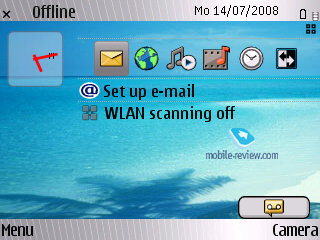
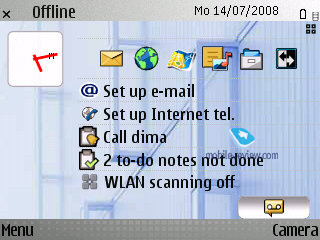
Phonebook. While at the standby screen you can type in any letter from the thumbboard and the phone will instantly look-up all contacts in the phonebook that have with this letter in either first or last names.
Contact groups have been given a major boost too - now you can submit a number for voice conferences, a password and also a PIN-code. Enterprise users, who use conference calls a lot, will surely appreciate this new ability. Plus you can select a ring tone for any contact group in the E75 (but not a picture, regrettably).
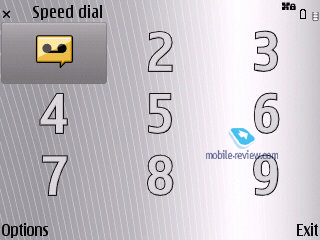
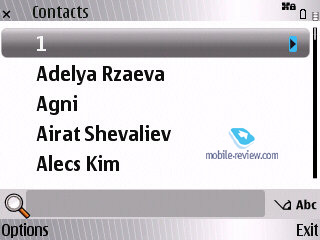
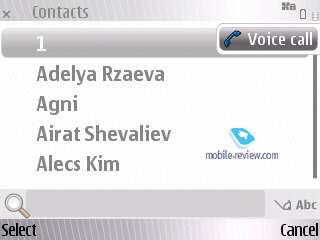
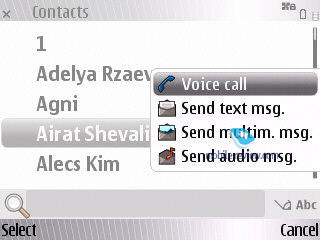
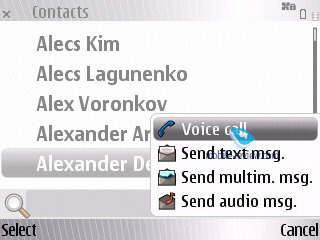
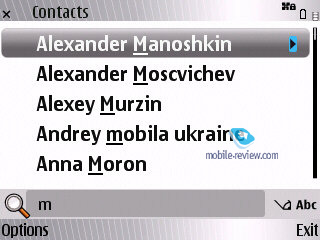
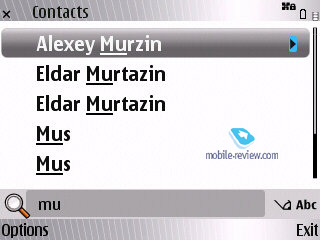
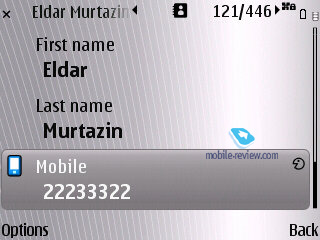
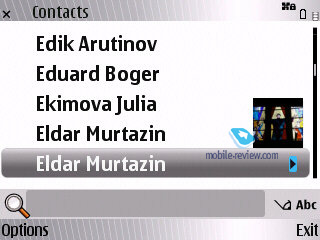
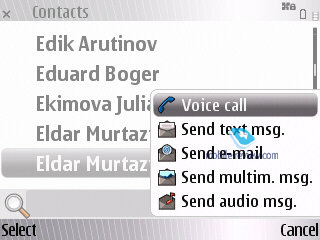
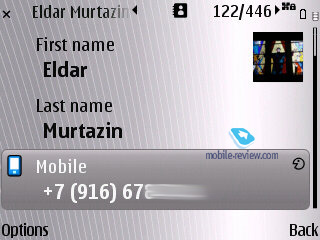
With groups you can also make use of "Call to many" feature, which will allow the E75 to set up a conference call on its own; on top of that the handset allows for bulk mailing.
Regrettably, there are no other views available for the phonebook - for instance, you can't make the E75 show contacts coupled with at least one phone number. At the same time it allows calling up a drop-out menu by selecting a contact and pressing the navigation button right - it'll let you make a call or send a message without leaving the phonebook menu. On top of that this list is context-sensitive, meaning that its options will change depending on what types of phone numbers are available for the contact in question.
The roster of fields you get to fill when creating or editing a contact hasn't changed much, but the E75 manages to offer a better address field setup and also BlackBerry PIN as a default option.
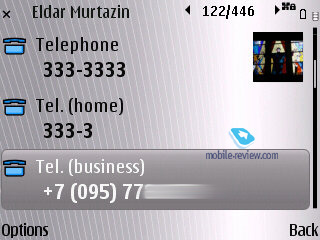
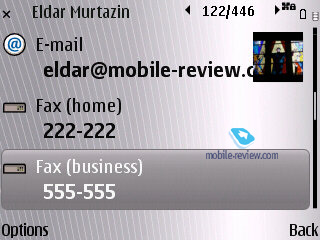
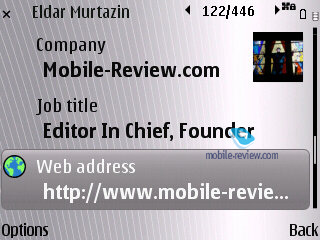
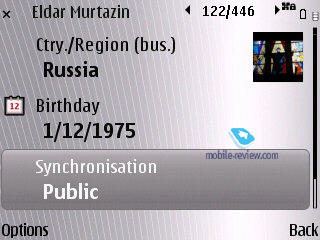
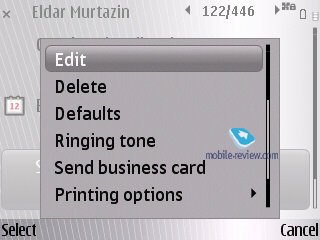
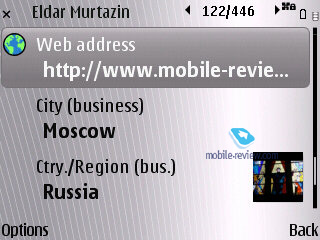
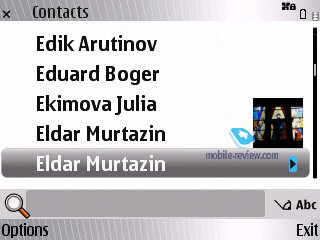
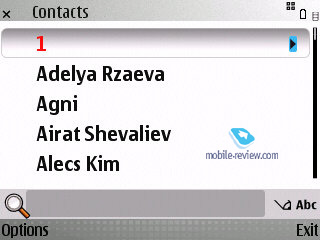
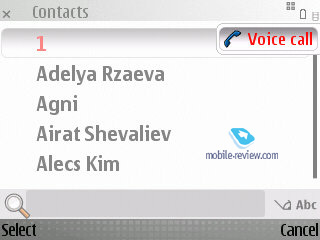
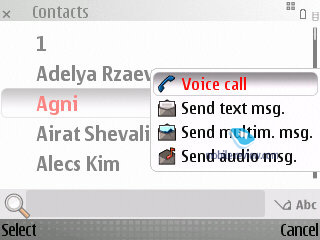
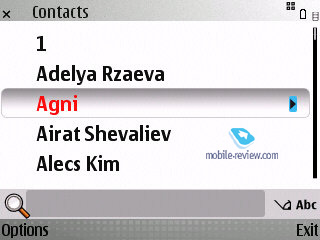
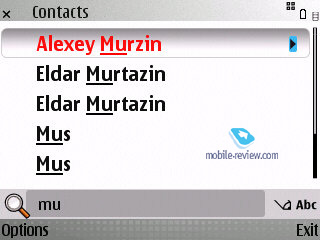
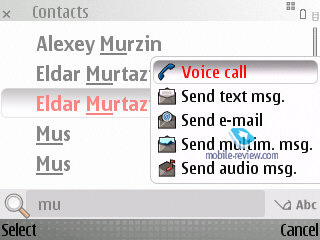

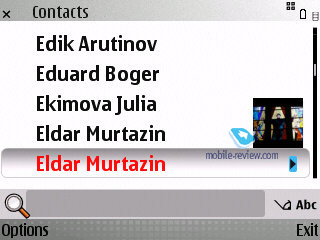

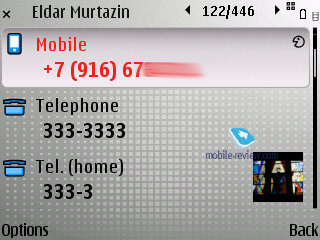
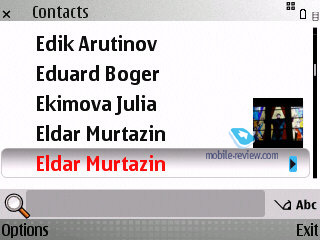
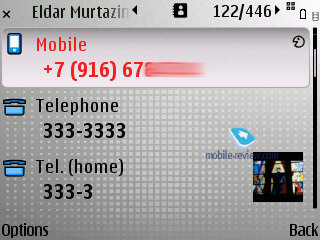
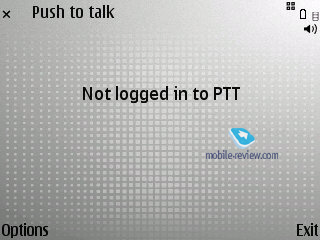

Calendar. The Calendar application hasn't changed a bit since its last iteration; in fact the only thing that's different is its layout, when the E75 shows both the calendar and events scheduled for the current day. In case there are too many entries, the E75 will show only their total number with no extra information. When using the weekly view of calendar, all events are displayed just like in MS Outlook, plus there are some pop-up tips scattered across the screen. All in all, while pleasant, none of these changes are groundbreaking.
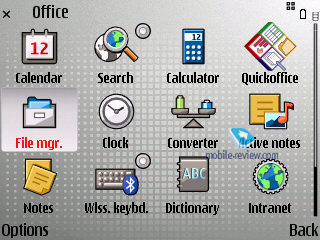
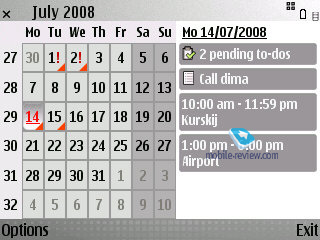
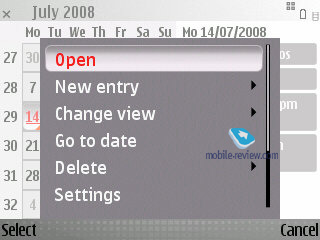
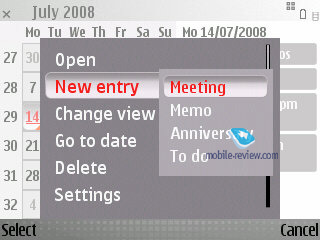
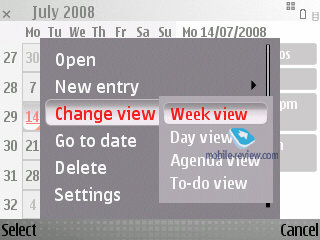
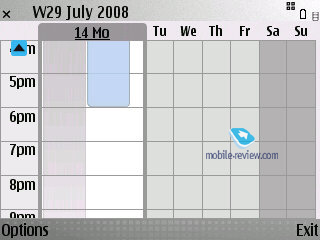
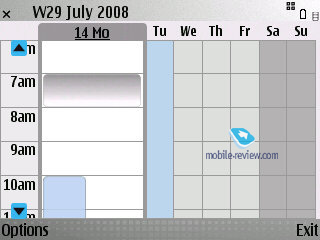
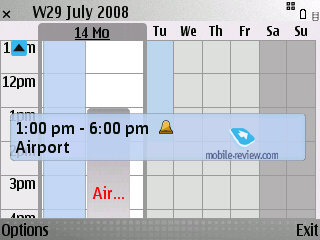
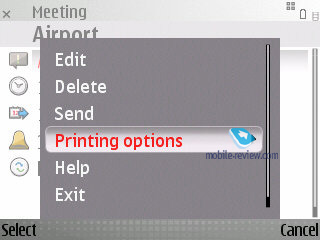
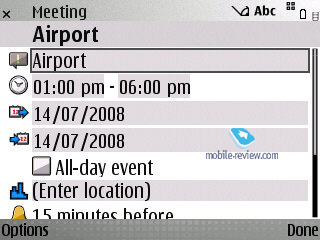
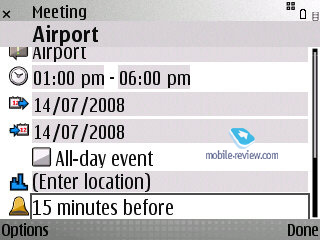
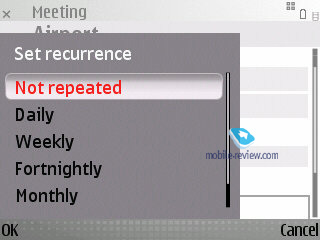
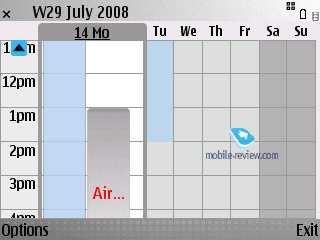
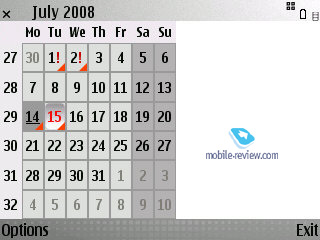
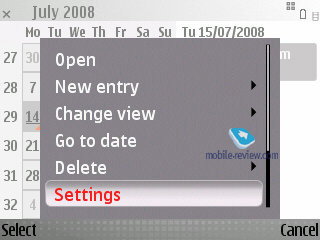
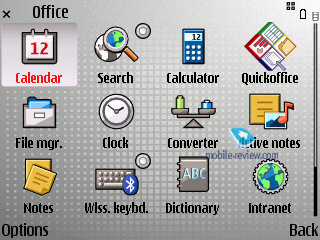
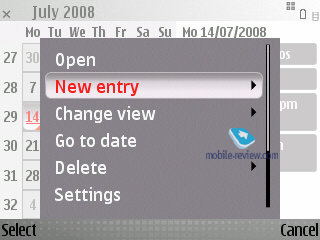
Office tools. . Enterprise users will surely appreciate the E75's Intranet application, which comprises the settings of VPN-client.
As far as office tools go, the E75 is no revolution - it has had its mail client improved, the phonebook has been tweaked here and there too, along with some other applications. Microsoft Office documents are still handled by QuickOffice, which is a pity (although many will be content with what it has to offer). Also there is a ZIP archiver and PDF reading tool. The Search 4.0 app can be linked directly on the main screen.
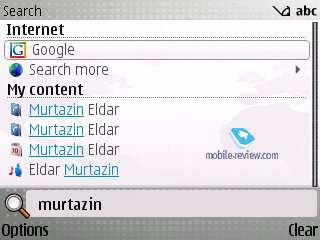
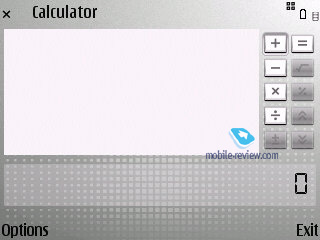
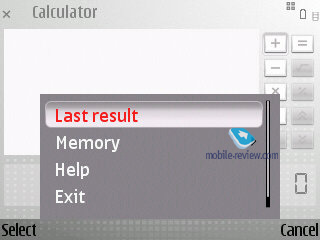
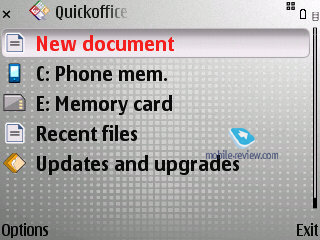
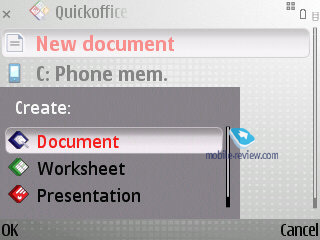
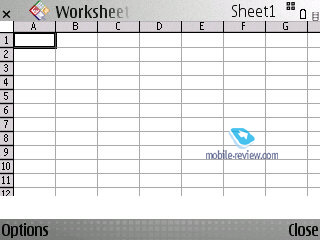
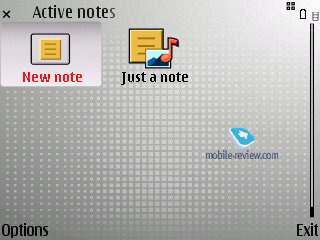
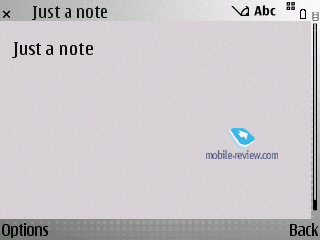
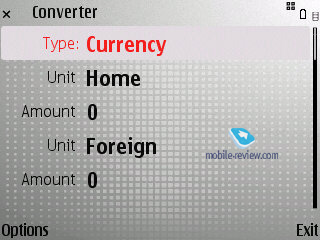
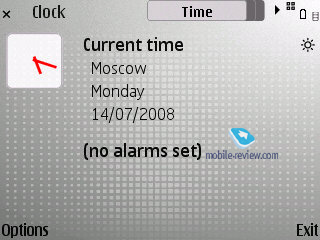
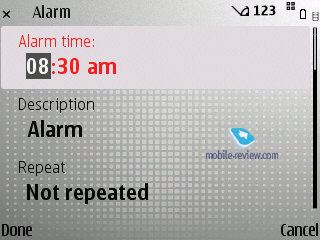
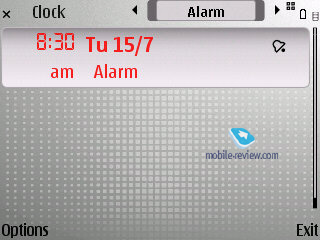
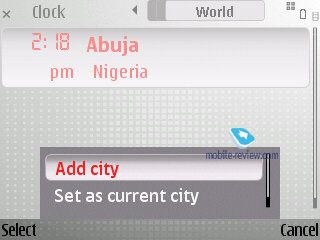
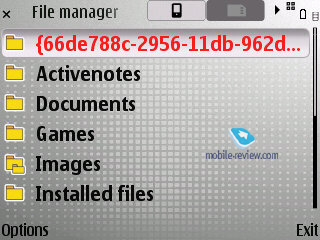
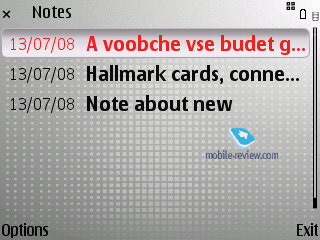
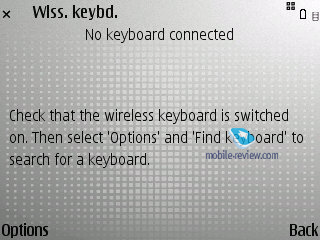
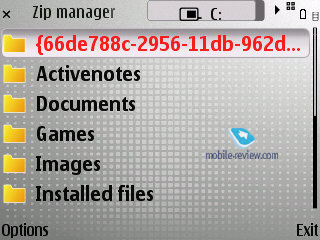
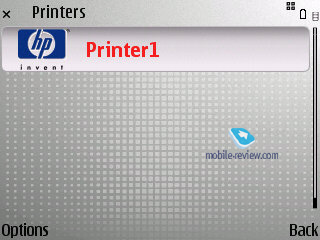
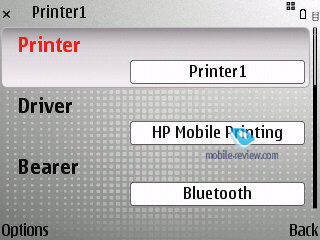
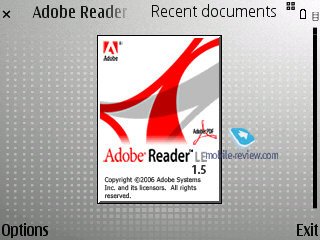
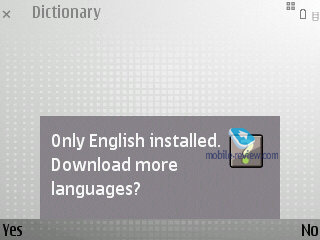
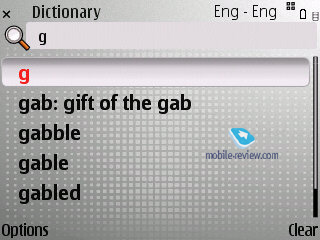
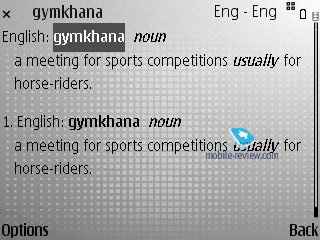
Message Reader is available with other S60 devices too - this application does pretty much what its name says, it reads messages aloud.
Clock – using this feature you will make the E75 tell you what time it is now.
Dialer – this application has been carried over from previous ESeries devices and basically it stems from handsfree car-kits - it allows you to scroll through a list with digits while the handset is reading them out aloud, so that you can dial a number without looking at the display at all.
Voice dial. There has been a lot of fuss around the E75's official description on Nokia's site, specifically around this line - Speaker dependent and speaker independent voice dialing (SDND, SIND). Someone suggested that the handset featured recordable voice tags, just like on old phones. But I have to disappoint him and everyone who believed in this - the E61 runs with the system that can adjust to your voice and keeps improving on the go. Although some think this intelligent system doesn't really work (and the truth is, it almost never finds the right name at first), in fact it takes the E75 around a week to come to grips with your voice and pronunciation and reduce the number of errors.
Data encyption. Another change of note - the E75's ability to encrypt data both on the memory card (microSD of any size) and the handset's internal memory. And this saves you a whole lot of trouble should you smartphone end up in some villain's hands, who does know how to break a standard password. On the other hand, if you forget the password yourself, you won't be able to recover the data, which will be a pity, but all systems of this kind have this glitch.
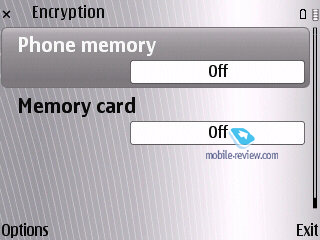
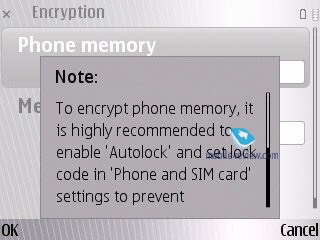
Voice Aid. While this feature's name probably doesn't say much, I find it pretty interesting and useful. For instance, it will allow you to handle the E75 when driving and so that you have only one free hand - simply assign this feat to one of the shortcut buttons, and there you go, you can either make the handset read out the call log, or pick an entry in the phonebook without even looking at it. In the latter case all entries get grouped up by the first letter of their names - by pressing the navi-key left or right you will switch between these categories (ABC, DEF, etc) and punching it up and down will scroll through the list, while the phone will be reading out all contacts you hover upon.
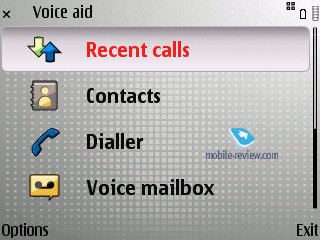
Music department. Since the E75 is almost an exact copy of the Nokia 5730 XpressMusic, it packs in a dedicated audio chip, meaning that it surpasses all previous Eseries-branded phones on this front, plus the E75's standard 3.5 mm audio jack allows the user to utilize a pair of custom earphones.
Back to the table of contents >>>
Impressions
Call quality was never an issue with the E75, as it easily lived up to our expectations of a Nokia-branded phone. Ring tones sounded quite loud; we also found the E75’s vibro alert was average strength-wise.
The E75 is set to arrive in most regions early in March with a price tag of 375 Euro (before taxes and subsidies). Although originally they planned to sell it at the price point the Nokia E71 retailed on its debut, the fact of the matter is that the EUR/USD exchange rate at its current level simply won't let this happen.
All things considered, the E75 isn't a mass-market offering - much like the Nokia E71 it targets a certain niche, albeit a pretty big one. It's a likeable phone that doesn't have any direct rivals, bar the Nokia 5730 XpressMusic that offers a bigger memory card in the box, along with a remote control and plasticky battery cover. But other than that they are very similar (again, except for some Eseries-specific controls). On a side note, Nokia's original intention was to sell the 5730 XpressMusic for 220 Euro a piece, however it seems that it occurred to them the niche they are targeting isn't particularly wide, so they'll bump its price tag up to 250-275 Euro when it hits the shelves
Once the E75's price rolls down to 300 Euro (which will take 7 to 9 months), it will start garnering more weight in its segment, however it'll never become a bestseller, nor will it ever reach the heights of the Nokia E71.
Related links
Back to the table of contents >>>
Eldar Murtazin (eldar@mobile-review.com)
Translated by Oleg Kononosov (oleg.kononosov@mobile-review.com)
Published — 02 March 2009
Have something to add?! Write us... eldar@mobile-review.com
|









































